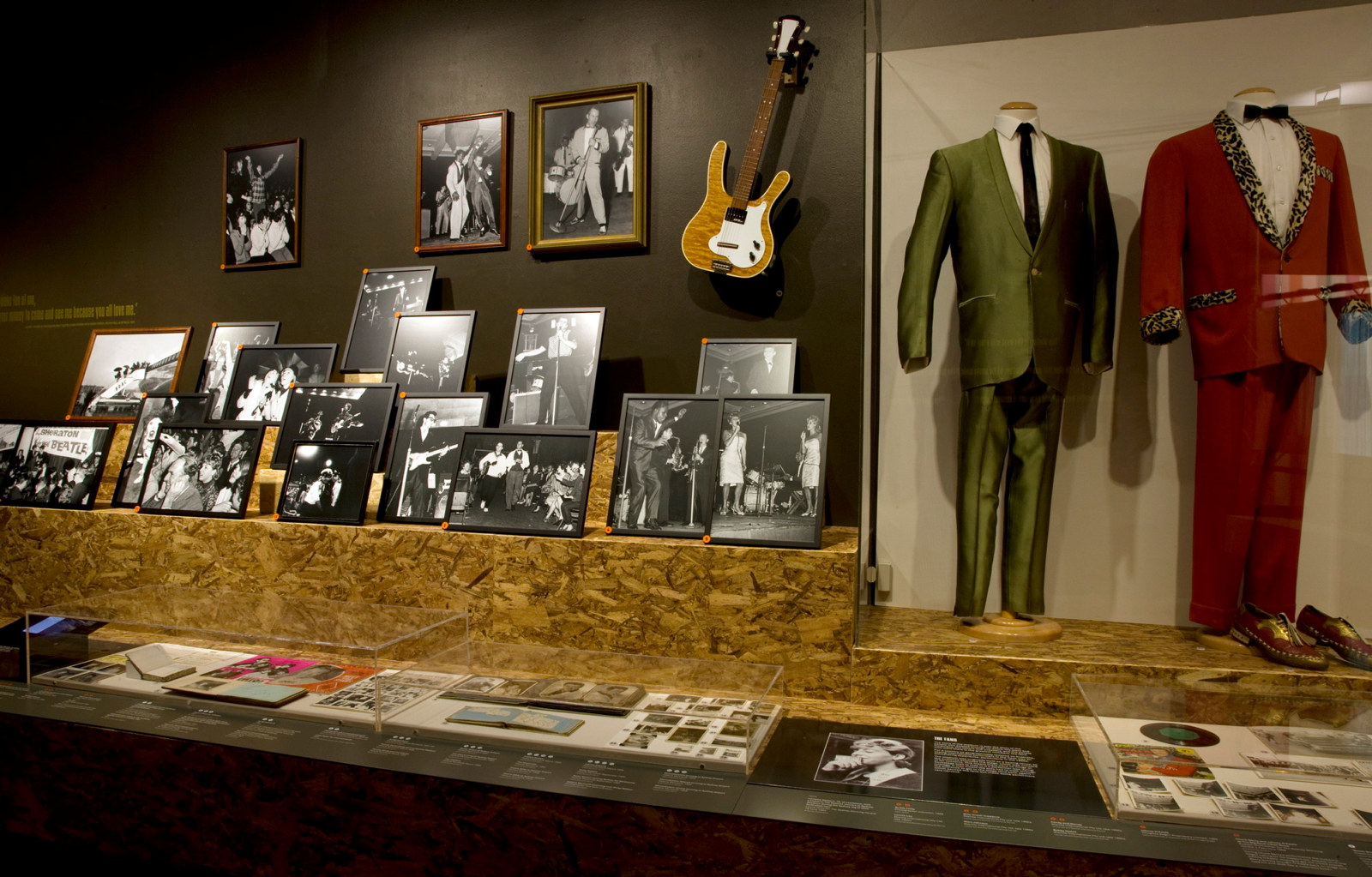The Wild Ones: Sydney Stadium 1908-1970
From Boxing Beginnings Sydney's largest music venue Wrestling to Roller Derby The Sydney Stadium, which stood on the corner of New South Head Road and Nield Avenue, Rushcutters Bay, was Sydney's pre-eminent boxing, wrestling and concert venue for more than 60 years.
From Boxing Beginnings
The corrugated iron and timber open-air stadium was built in 1908 by entrepreneur Hugh D McIntosh to stage the world heavyweight boxing championship between Canadian Tommy Burns and Australian Bill Squires. McIntosh wanted to cash in on the visit to Sydney of the US Fleet, which was on a worldwide goodwill tour. The plan to relieve the American sailors of their money didn't come to fruition (only two attended and they were both ejected for public drunkenness); however, Sydney locals turned up in droves, buying all of the estimated 12,000 tickets on offer.
Having made an enormous profit, McIntosh staged another fight on Boxing Day 1908, this time between Burns and Jack Johnson, the first African-American to challenge for a heavyweight title. Considered the 'fight of the century', the bout was hugely successful with Johnson demolishing Burns over 14 rounds in front of a hostile crowd.
In 1912 a roof was put on the stadium and the venue went on to host numerous boxing and wrestling bouts under the control of perhaps Australia's greatest all-round athlete, Reginald 'Snowy' Baker. The great Les Darcy fought the majority of his boxing matches at Sydney Stadium, including his last, before stowing away to America during World War I. Boxing was the only entertainment held continually throughout the life of the stadium. Almost every major Australian boxer fought there including Vic Patrick, Fred Henneberry and Dave Sands.
Many well -known international fighters also made the long journey to Sydney, no doubt attracted by the generous prize money offered by Stadiums Ltd (a company owned by Melbourne businessman John Wren), which operated the stadium from 1915 until its closure. American boxers Freddie Dawson, Emile Griffith and Ralph Dupas along with Japan's Masahiko 'Fighting' Harada were among many who battled it out in front of enthusiastic crowds.
Sydney's largest music venue
In 1954 recently arrived American promoter Lee Gordon began searching for a suitable concert venue in Sydney. With more than 10,000 seats, the Sydney Stadium was the only venue large enough to hold the number of people needed to recoup the significant cost of importing major stars into Australia.
Gordon's first 'Big Show' – featuring Ella Fitzgerald, Artie Shaw, Buddy Rich and comedian Jerry Colonna - was not a financial success. Tours by overseas acts were so rare that many Sydneysiders thought the concerts were a hoax. To promote his second Big Show, with American singer Johnnie Ray, Gordon hired a plane and dropped thousands of 'two-for-one' vouchers all over Sydney. The show was a sellout. Gordon went on to successfully tour artists such as Frank Sinatra, Louis Armstrong and Johnny Cash. Local impresarios like Kenn Brodziak, Bill Watson and Harry M Miller soon followed suit, staging performances by Judy Garland and Johnny Mathis, among others.
The stadium's timbers shook with the arrival of rock'n'roll in the late 19505. Bill Haley and his Comets, Australia 's 'Wild One', Johnny O'Keefe, and another successful local act Col Joye and the Joy Boys were among the first wave of rock'n'rollers to raise the roof. But teenage pandemonium really took hold when The Beatles played their only Sydney concerts at the stadium in 1964, followed by The Who and The Monkees, who both toured in 1968.
The stadium's timbers shook with the arrival of rock'n'roll in the late 1950s.
Wrestling to Roller Derby
Wrestling was staged at the stadium from 1924. Thousands of Sydneysiders packed the venue to watch these drama filled spectacles; some even joined in when a wrestler was thrown from the ring and into their lap. Although wrestling's legacy isn't as enduring as that of the boxing and concerts that took place at the stadium, it was hugely popular in its day. Chief Little Wolf, Gorgeous George and Australia's Len Holt were among the many wrestlers who entertained spectators with electrifying contests that made full use of their skill and athleticism, as well as demonstrating a generous dose of showmanship.
The stadium also played host to Roller Derby (1954), later called the Roller Game (1960s), a sport that combined rollerskating and elements of professional wrestling, and which saw its wheeled contestants hurtling around the purpose-built banked track.
In 1965 the stadium welcomed an unlikely hero to thousands of Australian children. The choreographed martial arts exploits of television's Japanese warrior Shintaro the Samurai (played by actor Koichi Ose) delighted wide-eyed youngsters during that year's brutally hot summer.
The stadium offered something for everyone. It was the place where ‘politicians and wealthy men in tailored suits rubbed shoulders with broken-nosed battlers and ticket scalpers’.1 How a corrugated iron 'barn' of a building came to be so loved remains a mystery to some. But for those who saw their first concert there, were enthralled by a great bout or even cheered a pretend ninja, the stadium was one of a kind. After 62 years of thrilling Sydneysiders with a smorgasbord of entertainment the Old Tin Shed was demolished in 1970 to make way for the Eastern Suburbs Railway.
Footnotes
- Terry Smith, The old tin shed: Sydney Stadium 1908- 1970, Eric Spilsted Publishing, Sydney, 1999, p9.
Related exhibition

Past exhibition
The Wild Ones: Sydney Stadium 1908-1970
Of all Australian cities, Sydney is perhaps the one most associated with leisure pursuits. The Wild Ones: Sydney Stadium 1908-1970 exhibition celebrated one of Sydney’s most iconic venues, the Sydney Stadium, which was fondly known as ‘The Old Tin Shed’
Published on